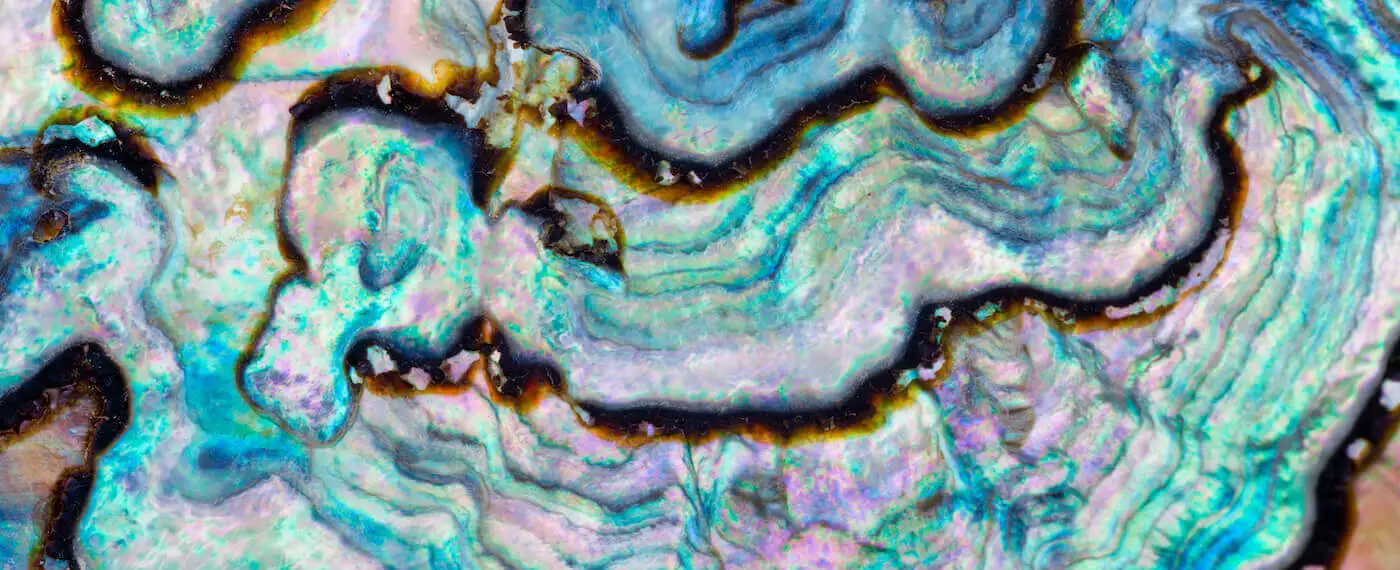
Hyperphantasia: The Truth About Photorealistic Imagination
Table of Contents
The human brain is an ongoing mystery. Many scientists have dedicated their careers to closely analyzing and understanding a unique phenomenon within the human brain, known as photorealistic imagination.
An individual who has a photorealistic imagination is found to have extremely high levels of imagination, meaning one has an impressive ability to see with the mind’s eye and visualize an endless array of situations and environments, also known as hyperphantasia symptoms.
However, an individual who can not voluntarily generate mental images classifies as someone with aphantasia. So, the question remains, how come some people have a strong imagination while other people report on mind-blindness?
What Is Hyperphantasia?
Hyperphantasia is commonly understood as one’s ability to explore the concept of imagination on extreme levels. In contrast, aphantasia is a psychophysical condition characterized by the lack of ability to build and construct mental images, create an abstract concept, or easily visualize objects. The incapability to mentally produce images in the human mind even when it corresponds to the formation of familiar places and objects is known as cognitive divergence, called mind-blindness. However, it is critical to be informed that mind-blindness only affects two to three percent of the world’s population.
Those individuals diagnosed with mind-blindness possess a unique wiring system allowing their brain to work. Process and function differently than most. Seamlessly, those diagnosed with mind-blindness have proven to show low effectiveness levels within stimulative practices and techniques, as there are little to no levels of brain-boosting abilities occurring. However, mind-blindness does not mean an individual’s memory is weakened or the individual suffers any levels of cognitive impairment. Additionally, mind-blindness should not be regarded as a disease requiring comprehensive treatment or immediate action.
Importantly, not all humans can recreate mental imagery on the same levels, as some individuals hold the unique ability to create and form mental imagery on an extraordinary level. In contrast, others struggle to form and recreate mental imagery on any level when an individual possesses a really overactive mind’s eye, forming new ideas, images, or concepts relating to objects not currently present to the human eye is commonly claimed to be a magical and unique ability. Thus, relating to fevered imagination, also known as hyperhantasia, the opposite of mind-blindness. Hyperphantasia represents the ability to form extremely vivid and sublime visual images.

Can You Visualize Your Breakfast?
Francis Galton, a famous explorer, recognized for his investigation of the human brain capacity and intelligence, closely focused his research on imaginary capabilities while conducting a visual imagination test among a large selection of participants. Galton’s visual imagination test asked the participants to recall details about their breakfast, grouping the individuals into three separate groups. The first group was categorized as those who lacked imagination and had aphantasia; the second group was for those who had normal visualization skills, and the final group was classified for those who could share an abnormally high degree of detail encompassing very distant and accurate visualizations. For example, an individual who could clearly describe and imagine what they had for breakfast that morning in the same way if they were sitting and looking at it would be categorized in Galton’s third group.
Try to imagine what you ate for breakfast today!
- What was the food?
- Were there flowers or other decorations on the table?
- Did you use a knife and a fork?
- What was the light in the room?
- Can you retrieve the colors of products or things on the table, and are they distinctive?
Answering these questions about your experience from the past, your brain should help you to create a clear image and mentally recall the exact scene from your memory. In this way, you can place yourself on a scale of intensity of the imagination. To detect excessive fantasy abilities is also possible with other multiple vivid imagination tests which will be described below. But first, let’s figure out what is the problem with the definition and if imagination is linked to photographic memory.
What is the problem with the “Extreme Imagination.” A definition:
It is quintessential to understand the difference between eidetic memory and hyper-vivid phantasia as these two terms are closely related concepts but do not compare the same. For example, instant, accurate recalling of a scene or object an individual has just experienced is known as photographic memory, which is different from being able to recreate a mental image of something that was experienced yesterday. In particular, individuals with extensively developed eidetic memory can memorize and retrieve only those things they’ve just had in front of their eyes for only a short period of time. While those individuals with hyperphantasia can only share descriptions of the actual object or thing in detail, but can also easily visualize text when reading, covering the characters and people, textures, scenery, tastes, and odors described in the text.
Hyper-Vivid Phantasia Symptoms: What Do People Usually Experience
What is it like to have the ability to vividly visualize? What are the common hyperphantasia symptoms? How can awakened imagination affect day-to-day life? Is it a useful ability that promotes creativity or rather a mind skill that distracts and creates troubles with attention? Let’s find out.
Typically, individuals with hyper-imagination are able to construct imagery that is beyond detailed and brightly outlined—resulting in some individuals having the capability even to experience a 360-degree vision and view objects from opposite directions. As the capability to disassociate oneself from reality allows one to think deeply through and analyze life possibilities, predict some outcomes regarding specific decisions, and come up with multiple scenarios for particular events and daily situations.
Suppose you are an individual who has noticed yourself strive and overanalyze a majority of everyday decisions in day-to-day life, and mental imagery has become too distracting, resulting in your mind becoming preoccupied while experiencing attentiveness. In that case, you probably face the negative side effect of hyperphantasia.
Benefits/Disadvantages Of Overactive Imagination
Over imaginative minds create vast and fascinating opportunities. Opportunities allowing people with hyperphantasia to present high levels of writing, art, drawing, photography, etc. Individuals with hyperphantasia are not limited in their ideas and have freedom of thought. Having the awakened mind’s eye also means enhanced problem-solving skills and critical thinking. It’s not only about coming up with objects, it is a great capability to reproduce sounds, feelings, smells, or even tastes. Sometimes, powering imagination and building mental scenes allow exploring not only the physical world but analyze the inner self and our emotions, how we perceive our complex world. Extraordinary visualization skills might even uncover something about how we may experience the surrounding environment.
There is a wide selection of outstanding scientists, philosophers, inventors, and engineers within humanity’s history that hold the unique ability to visualize abnormality, allowing them to travel through time and space, being positively influenced by the factional world, objects, fears, and fantasies. After all, how else is it possible to explain all those amazing inventions that Nikola Tesla created?
Unfortunately, sometimes such an ability can negatively impact an individual, as the inability to concentrate on a task requiring zero stimulation has an incredibly harmful repercussion relating to disorganization and increased frustration.

Top 5 Hyperphantasia Tests
For some individuals, picturing familiar places, the route to work, or their own home is not as straightforward mind tasks as for people with hyper-imagination. Thus, finding out which group you belong to is possible with one of the vivid imagination tests.
Auditory test. Choosing your favorite song and trying to recreate it in your mind, even if it involves several instruments is a quick way to gauge how well you are able to visualize. So if you can hear some instrument, vocals, can follow the tempo, or even imagine this song in another genre, you have probably passed one of the common hyperphantasia tests.
Visual test. Close your eyes and imagine an apple. Think of this round shape, color, and smoothness. Do you see any defects on its surface? Do you see it red or green? Are there any tonal contrasts? Can you automatically create a clear mental image? Or maybe such visualization practice seems impossible to you?
Gustatory test. Imagine a fruit. Let’s take something exotic, for example, a banana. Can you imagine peeling it? Do you feel it taste? Can you imagine eating banana macarons? What about chocolate banana ice cream?
Spatial test. Here you should bring to your imagination the design and interior of any familiar room. Can you construct a whole room in your mind at once? What is the lighting? Can you see small decorative elements? Is there a carpet? What is the color of the walls?
Emotional test. Now you have to think about some important event in your life, such as getting a driver’s license, wedding, and receiving the desired present. Can you feel that feeling of great enthusiasm? Do those memories give you a thrill? Or maybe, it no longer evokes any specific emotion and doesn’t resonate in your mind?
Final Thoughts
Having a vivid imagination is a unique and special skill allowing your brain to hold the compacity of mentally imagining and creating objects, ideas, and concepts with an extremely high level of detail. Acquiring high levels of imagination lets your brain’s cognitive functions activate and expand in ways you may have never experienced before, which has the potential to change your daily life mentally and physically drastically. Letting your imagination run wild is a beautiful and extraordinary feeling within. Thus, it is quite vital to explore and be curious about hyperphantasia symptoms and tests. Especially, if you want to analyze yourself from within to see if you carry such unique abilities that allow one to unlock and optimize the natural potential of the brain’s complexes and capabilities relating to the imaginative mind while effectively and positively stimulating the brain. Thus, it’s quite important to explore and allow yourself to be curious about hyperphantasia symptoms – to tell if you have the abilities allowing one to optimize the natural potential of your imaginative mind and stimulate the brain even more.
FAQ
What is hyperphantasia?
The brain’s ability to imagine things, objects, and a range of scenes vividly like experiencing and seeing them first-hand, is called hyperphantasia.
How do you know if you have hyperphantasia?
Individuals who can generate extremely vivid mental scenes and can visualize concepts in their minds without effort probably have extreme imagination. If you are curious to find out if you have the condition, you can check yourself using several specially designed tests.
Is there a test for hyperphantasia?
There are several tests that can help you to recognize the condition and determine your image vividness potential.
What are the symptoms of hyperphantasia?
Super realistic visualization and an ability to easily reproduce mental imagery are the common symptoms of the condition.